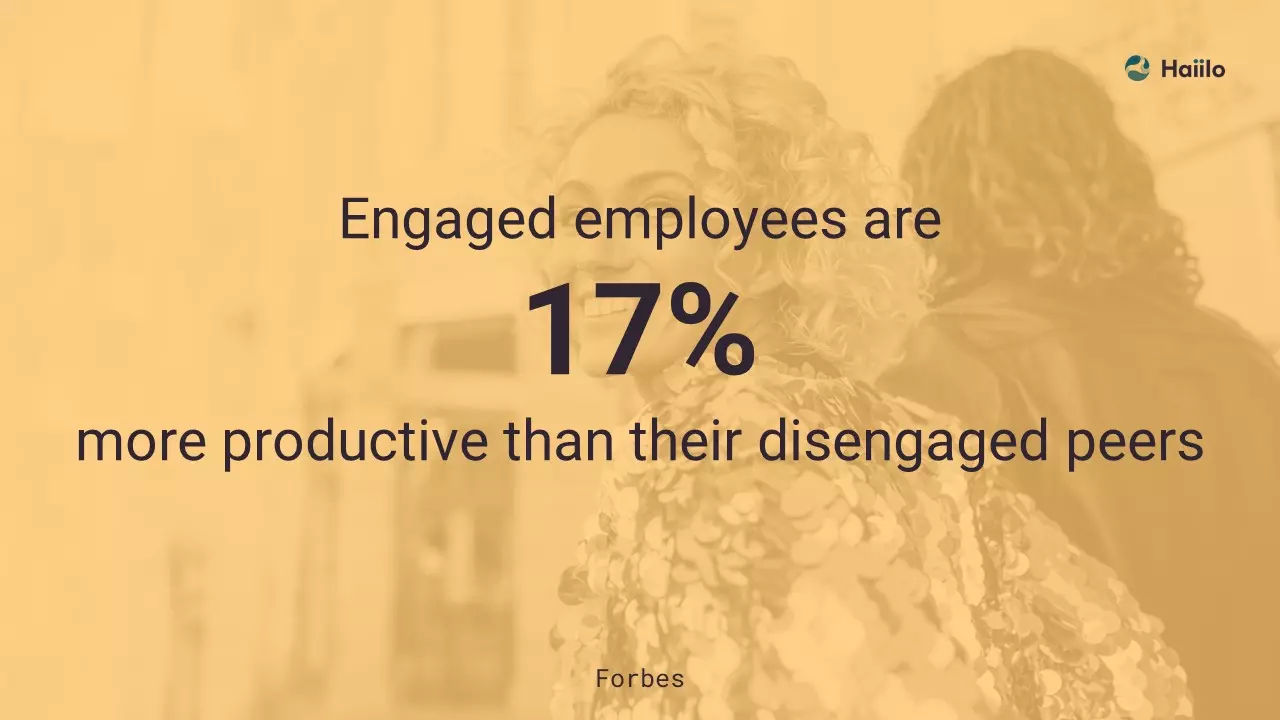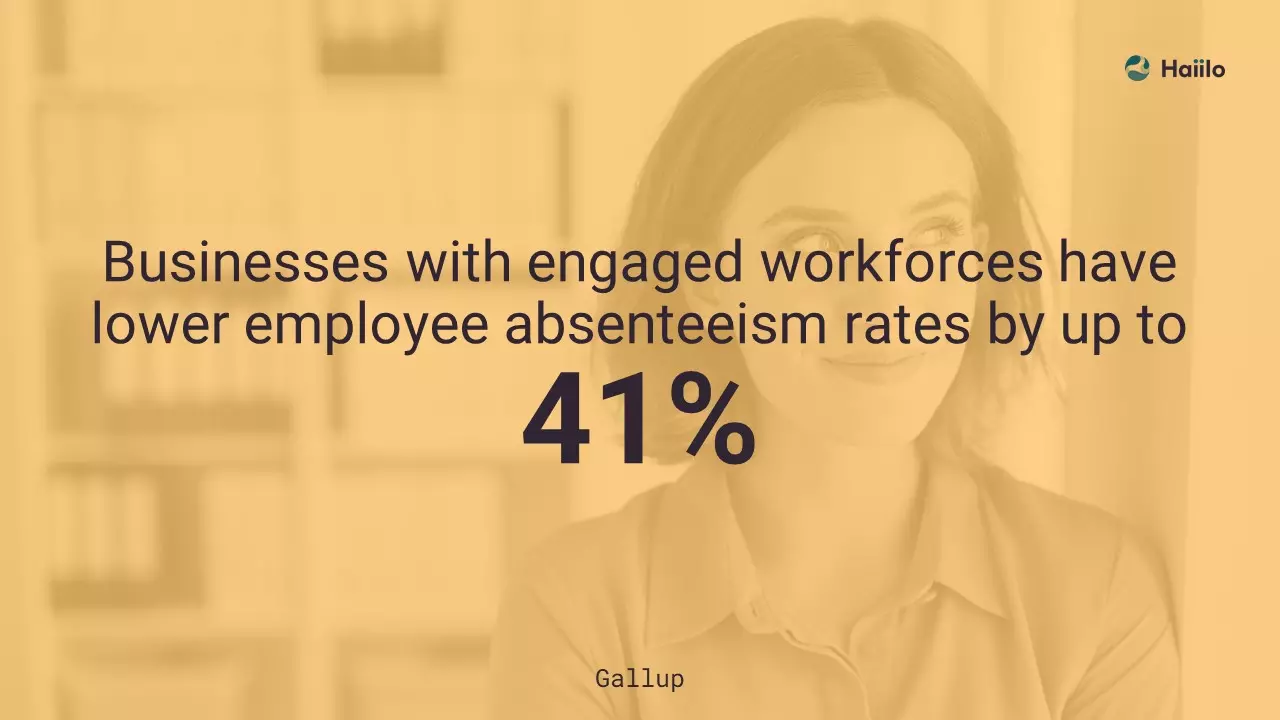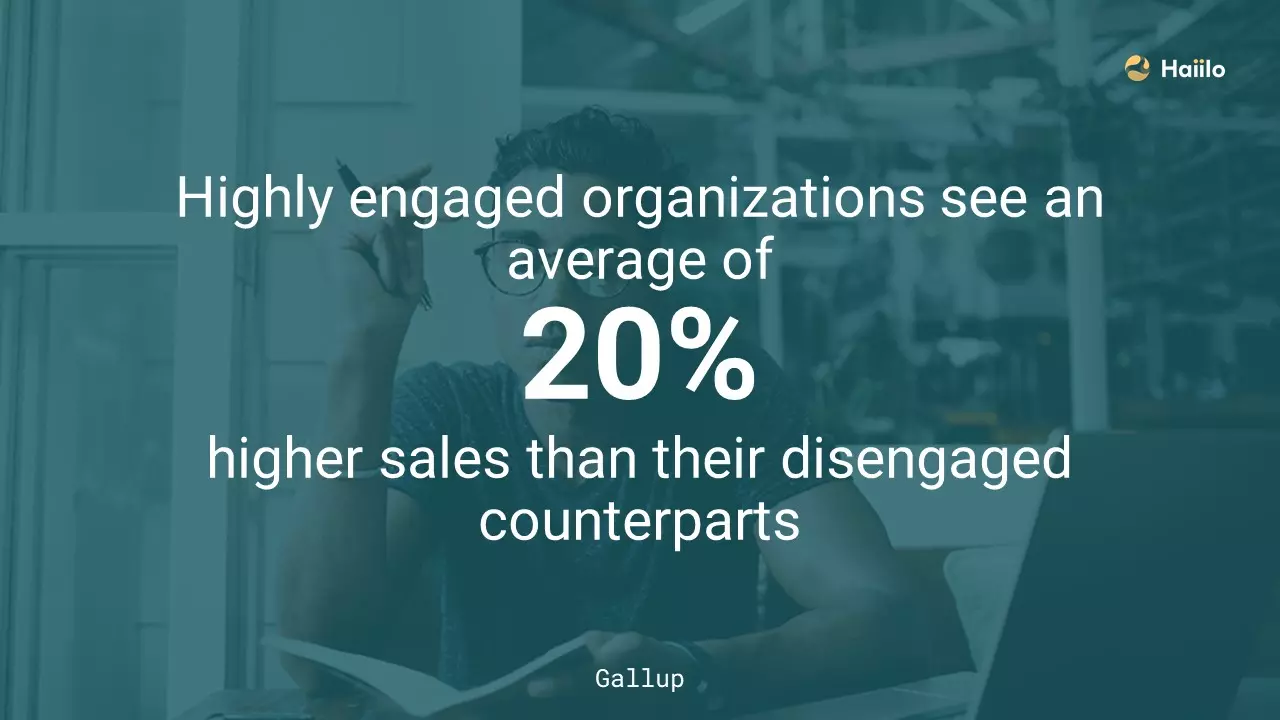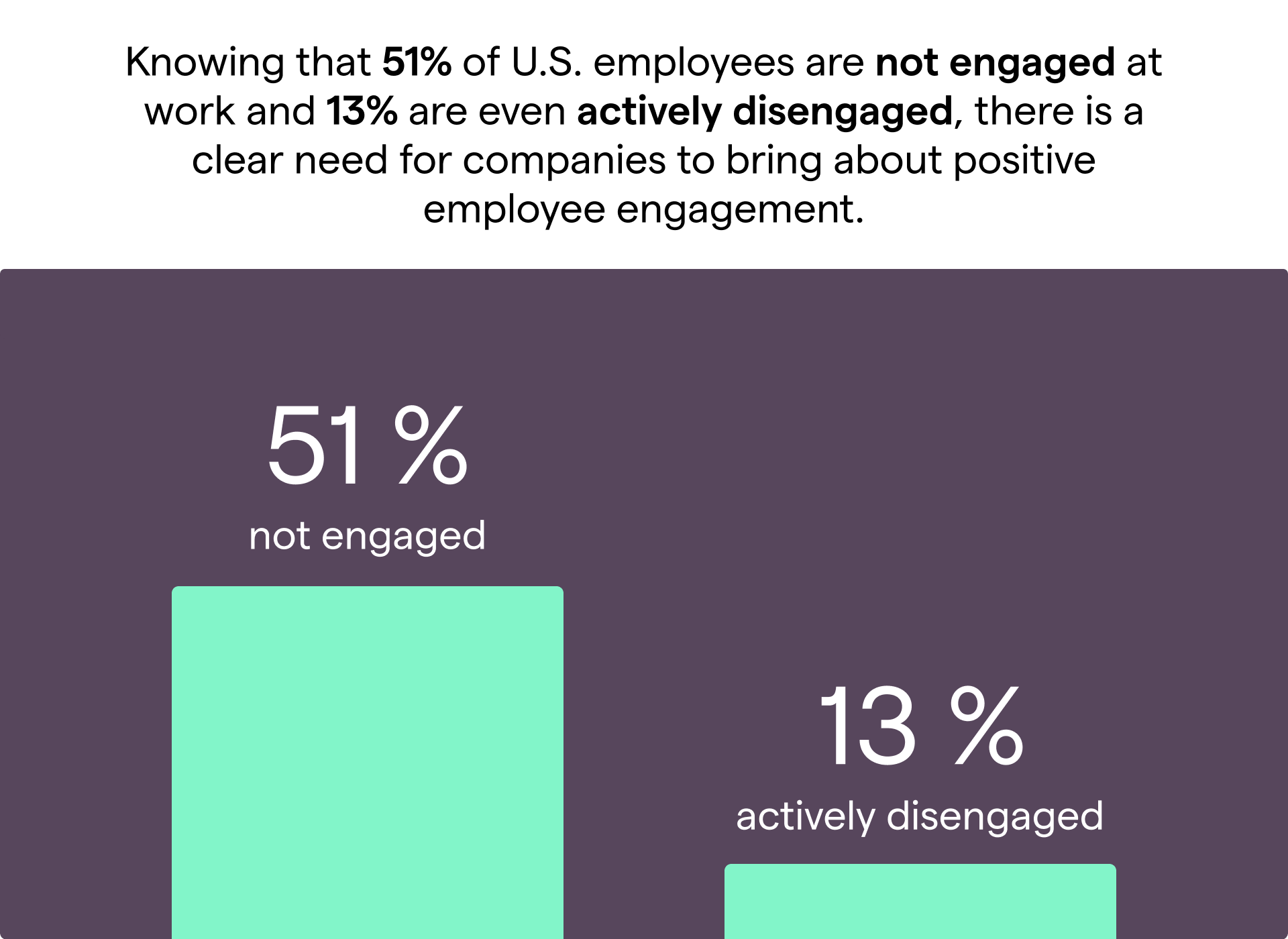The benefits of high employee engagement in the workplace are numerous, and increasing this engagement is one of the biggest priorities for employers across the world.
Hybrid and remote work has also brought some new challenges for organizations. They need to learn how to adjust to the new ways of working while keeping their employees happy and motivated.
Even though there are many benefits of employee engagement, in this blog, we will cover some of the most important ones. If you are an HR professional, you can use this blog as a pitch for new employee engagement initiatives in your company.
Reap the benefits of employee engagement with the right IC tools
Benefit #1: Higher employee productivity and company profitability
The ultimate goal of every organization is to improve its profitability and efficiency. While technology and other resources may help you improve organizational productivity, people are the most important asset to focus on.
Employers that manage to keep their people motivated and engaged are, in general, more successful. Research shows that engaged employees are 17% more productive than their peers, and this engagement also leads to higher organizational profitability.

According to another research, organizations with higher employee engagement have 21% higher profitability than their peers. At the same time, companies in the U.S. lose between $450-$550 billion each year due to disengaged workers.
So the number one and the ultimate benefit of high employee engagement are higher employee productivity and increased company profitability.
💡 Learn how to enable your remote employees for success!
👀 If you struggle to engage your distributed workforce, check out these 9 tips by IC and HR experts!
Benefit #2: Better workplace culture and improved employee wellbeing
Engaged employees are happy employees. Companies that understand the drivers of employee engagement heavily invest in employee recognition, career development, valuable and frequent feedback, diversity and inclusion, employee wellbeing, and other initiatives that people care about.
Consequently, these companies tend to have employees who naturally shape positive workplace culture and a healthy work atmosphere.
Better workplace culture has many benefits, and every organization strives towards building an organizational culture that every employee wants to be part of.
Furthermore, according to research by Deloitte, 82% of people believe that culture is a potential competitive advantage. In addition to that, 94% of entrepreneurs and 88% of job seekers say that healthy work culture is vital for success.
Workplace culture significantly impacts the amount of stress and pressure people feel at work, directly affecting employee health and well-being.
📙 Since your company culture plays a big role in driving employee engagement, we have prepared for you a guide for building a positive workplace culture!
Benefit #3: Lower employee turnover and absenteeism
If you are an HR professional, you know very well that 2020 and 2021 were the years of great resignation. People leave their jobs more than ever before. They are looking for something more meaningful and aligned with their personal values.
Organizations that align their core company values with employees’ beliefs witness one of the biggest benefits of high employee engagement – high employee retention.
It is not surprising that aligning with the organization’s values is the #1 predictor of employee engagement.
Furthermore, one of the first signs of low employee engagement is high absenteeism. When you notice your employees missing work more than usual, this may signify burnout and low engagement. According to a Gallup Workplace report, businesses with engaged workforces have lower employee absenteeism rates by up to 41%.

To better understand the current state of your employees’ engagement at work, consider distributing regular employee surveys. These can be extremely helpful in finding commonalities and causes related to employee engagement in the workplace.
Benefit #4: Improved employee safety
Due to COVID-19, employee safety has become one of the biggest priorities for many organizations across the world. Construction, healthcare, retail, and similar industries spend enormous amounts of money every year to protect their workforce.
The best and most natural way to ensure higher employee safety is to increase employee engagement.
An excellent example of how beneficial engagement can be is an SHRM Foundation study on employee engagement at beverage giant Molson Coors. It concluded that engaged employees were five times less likely than non-engaged employees to have a safety incident and seven times less likely to have a lost-time safety incident.
In this study, the company was able to save $1,721,760 in safety costs just by strengthening their commitment to employee engagement.
For companies with field and frontline workers, higher employee safety is probably the biggest benefit of employee engagement!
Benefit #5: Better sales and customer service
What is the biggest difference between a successful and less successful salesman? The level of engagement at work!
Yes, salespeople possess specific hard and soft skills, but the level of engagement, motivation, and persistence is what makes the best salesman out there.
This is not just an opinion; it’s a fact:
Highly engaged organizations see an average of 20% higher sales than their disengaged counterparts.

Besides acquiring new customers, we know how important it is to retain the existing ones. This can be done only by providing a memorable and positive customer experience. Plenty of research shows the correlation between positive employee experience and positive customer experience.
Meaning, the better impression your customer service teams have of your company, the better experience they will provide to the customers.
But why do businesses care about customer service so much? Because 7 out of 10 consumers will spend 13% more money with a company that provides an excellent customer service.
📙 To ensure a positive employee experience in the workplace, check out our ultimate employee experience guide
Benefit #6: Greater employee advocacy and attractive employer brand
One of the biggest benefits of employee engagement is employee advocacy. Engaged employees are happy and proud to work for their employees, which is why most of them naturally become their organization’s brand ambassadors.
But why should we care about employee advocacy?
The benefits of advocacy in the workplace are huge! It impacts the company’s sales, marketing, customer service, employer branding, and talent acquisition efforts.
People tend to trust other people (especially family and friends) much more than brands and CEOs. So if you have employees speaking on behalf of your brand and communications departments, you can reach a 561% wider audience than you would on your branded channels.
According to research, a recommendation from a friend or family member makes 83% of Americans more likely to purchase that product or service.
When employees talk positively about their employer, that automatically improves their employer brand and makes talent acquisition much easier and more efficient.
Benefit #7: More teamwork and innovation
Individual engagement creates healthy competition among teams. Hence, it is not uncommon for an individual to drive the engagement of an entire team. Even though managers may play the most crucial role here (they are accountable for over 70% of employee engagement), other team members can also play a significant role.
It is crucial to recognize desired behaviors and actions among teams in front of other team members. Praise and appreciation often drive people more than monetary rewards, and they work particularly well on a team level.
Engaged teams and individuals are also greater innovators. Their desire to constantly improve things helps them think out of the box and be more creative. In a world where constant innovation is expected, it is not surprising that creativity and open-mindedness are seen as some of the biggest benefits of highly engaged employees.
Furthermore, 78% of employees who are encouraged to be innovative and creative are more loyal to their organization. It gives them the autonomy to make decisions and be creative with their work.

💡 Learn how to encourage employee development in your organization!
How to Improve Employee Engagement in Your Organization
As mentioned earlier, there are many different factors that impact employee engagement and employee experience in the workplace. Some of the most common factors include:
- Compensation and benefits
- Alignment with organizational mission and vision
- Good leadership and relationship with managers
- Career development opportunities
- Interesting projects, digital workplace, and the use of the latest technology
- Frequent feedback and recognition
It is important to remember, however, that the right workplace technology can significantly impact an organization’s ability to achieve higher employee engagement levels.
Solutions such as employee engagement apps and employee experience platforms are designed to follow the latest trends in the HR world. They enable organizations to become desirable employers to work for.
If you are looking for an employee engagement platform for your organization, schedule a Haiilo demo today to learn how other organizations have improved the workplace experience and employee engagement with it!










